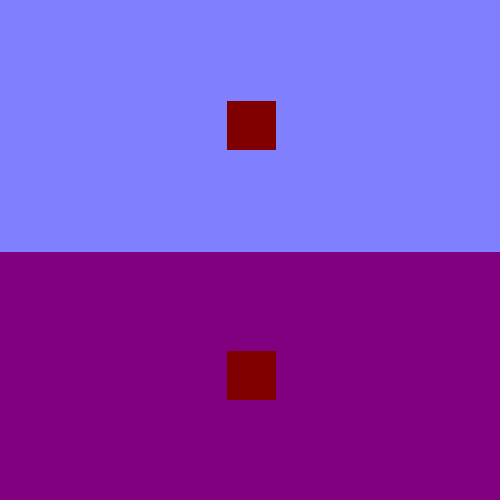Shader Intermediates - Color Part 2
While colors can seem simple to work with, there are subtleties involved that can affect the outcome of how colors are seen by people. These can be caused due to the limitations of how colors are represented by computers, or due to how colors interact with each other, affecting the way they appear to us.
Let's look at certain issues and subtleties of color.
Limited number of digital colors
The primary limitation with digital color is that only a limited number of colors can be represented by computers. This is due to the fact that colors are represented using numbers that are within a certain range.
Each color component (RGB) is stored as an 8-bit value, which means that each component can have at most 256 possible values. This may not seem like much, but when all components are combined, this allows for 16,777,216 (256 × 256 × 256) possible colors.
However, even with these many colors, there are some colors that just can't be stored and represented by computers and displays.
If you take two colors from the band, there will always be a color present between the two selected colors, no matter how close they are. As a result, there are an infinite number of colors present within the visible spectrum of light.
These means if we have take consecutive colors in a computer, there is a color between them that cannot be represented and shown, resulting in potential loss of detail.
Of course, humans are not able to differentiate between all of these colors, since we are limited by the sensitivity of the cones in our eyes.
This allows computers to not require having the ability to represent every color, but computers cannot represent all the colors that the human eye can see using just 8-bits per channel.
This is the reason why the HDR (high dynamic range) color-space was created. The increase in the range of values that can be represented allows for more colors to be shown by computers.
Another benefit is that the increase in color-space allows for more detail to be shown, since previously certain colors within an image could not be shown because there was no value for it.
The effects of this limitation of digital color will be discussed in a later chapter through an example.
Interaction of color
Colors are not seen as absolutes by us, but in relation to other colors surrounding it. How a color is seen depends not on just the value of that color, but also the values of the colors surrounding it, and how they interact with each other.
To understand this, let's look an example image.

In this image we see a background of a white to black linear gradient starting from the top of the image and going down to the bottom. At the center is a gray tile gradient that is slightly dark at the top and slightly light at the bottom.
Actually, the last statement isn't accurate. At first glance, the inner tile may look like a gradient, however, it is a tile of a constant gray color.
If you wish to confirm, save the image on your desktop and use a color picker to compare the above and below colors of the tile.
The reason the tile appears as a gradient is due to the background of the image. The light color of the background at the top and the darkness of the background at the bottom influence how our eyes sees the color of the tile at those areas.
This interaction makes the tile at the bottom appear brighter due to the relative darkness of the background, and the tile at the top look darker due to the relative brightness of the background at the top.
This example is with grayscale images, but the same issue applies with color images, although it may not be as "strong". Here is an example image showing an example in color:

In the above image, the tiles inside the bottom and top half are the same color, but the tile at the bottom may appear to be slightly brighter due to the background being darker.
This interaction between colors affecting each other can be an issue, but also can be exploited for certain benefits. An example of this will be shown in a later chapter through an example.
Colors seen by digital devices
Another thing that may not be known is how color is actually seen by digital devices such as cameras, versus how humans see and interpret color.
The YouTube channel minutephysics has a video providing a great explanation about this, and also how it can be overcome in software. This is useful to know when performing image manipulation.
Summary
- Computers are limited in the range of colors they can represent and show because there are only a limited set of numbers that can be set for colors.
- Colors interact with each other in ways that affect how colors can actually appear, making things appear brighter, darker, or of a different shade than they really are.
- Digital devices see and record color differently than how humans see color. This results in artifacts or errors when performing color and image manipulation, which can be solved by accounting for these differences.